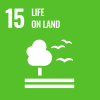
Effects of Space Shuttle on Animals
Beginning in 1978, HSWRI’s investigators studied the potential impacts on sonic booms from launches of space vehicles, including the Space Shuttle, on the biota of the California Channel Islands. Researchers monitored the abundance of seals and sea lions, with a focus on San Miguel Island (where sonic booms would be most severe) compared to San Nicolas Island (which was not expected to be impacted by sonic booms and could therefore be treated as a control group.) This long term study was an unparalleled opportunity to observe and document population trends of the six pinniped species which visit the Channel Islands.
Shuttle, on the biota of the California Channel Islands. Researchers monitored the abundance of seals and sea lions, with a focus on San Miguel Island (where sonic booms would be most severe) compared to San Nicolas Island (which was not expected to be impacted by sonic booms and could therefore be treated as a control group.) This long term study was an unparalleled opportunity to observe and document population trends of the six pinniped species which visit the Channel Islands.
Our research found that 40% to 100% of male seals responded to sonic booms by lifting their heads in alert, but there were no movements, increase in threat displays or increased aggressiveness. Female seals alerted to sonic booms the same way males did with a heads-up posture, but fewer reacted than males, especially after the early breeding season. Even fewer nursing pups responded to sonic booms, with nursing interrupted only on three occasions, when the pups stopped nursing for at most 7 minutes after the boom due to the females changing position. Weaned pups showed virtually no reaction. Some birds were flushed by the boom: gulls circled silently for 2 to 5 minutes before returning the roost, and some shorebirds stopped foraging for a minute. In general, humans being in the vicinity of the animals caused greater disturbance than the sonic booms.
Publications:
Jehl, J.R. and C.F. Cooper, eds. 1980. “Potential Effects of Space Shuttle Sonic Booms on the Biota and Geology of the California Channel Islands,” Technical Report No. 80-1, Center for Marine Studies, San Diego State University, San Diego, CA.
Jehl, J. R. Jr., M.J. White, Jr., and S.I. Bond, 1980. “Effects of Sound and Shock Waves on Marine Vertebrates: An Annotated Bibliography.” U.S. Fish and Wildlife Service, Biological Services Program, FWS/OBS-80/02, 6pp.
Stewart, B.S. “Studies on the Pinnipeds of the Southern California Channel Islands, 1980-1981.” Sponsored by United States Air Force Space and Missile Systems Organization and National Marine Fisheries Service. 117 pp.
